
Why and how to investigate your canine patients whose overactivity drives their owners up the walls.
Dr. Overall, faculty member at the University of Pennsylvania, has given hundreds of national and international presentations on behavioral medicine. She is diplomate of the American College of Veterinary Behavior (ACVB) and is board-certified by the Animal Behavior Society (ABS) as an Applied Animal Behaviorist.

Why and how to investigate your canine patients whose overactivity drives their owners up the walls.

Whether youre trying to prevent distress, alleviate ongoing distress or help dogs and cats not make fearful memories, use this guide to find the right formulation for your patients.

References: Dr. Karen Overall provides a step-by-step plan to reduce fear in your veterinary practice.

This catchall phrase used to describe aggressive behavior in dogs can actually do more harm than good.

Careful observation can provide veterinarians and owners clues about how a dog may react in specific situations.

Research suggests that neutering may help modulate unwanted behaviors and eliminate or reduce the risk of some diseases-but exacerbate other health issues. So consider the favorable and adverse effects of neutering to help veterinary clients make informed decisions.
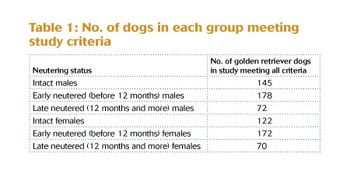
Veterinarians and owners alike are troubled by a new study linking castration and ovariohysterectomy with an increased risk of disease-including some cancers. Should this study change the way we discuss and perform such common, recommended procedures?

Embrace deference, not dominance, to ensure healthy and happy human-pet relationships.

Exploring our misconceptions and myths about human-pet relationships.

Be ready to answer these client questions to ensure a successful housetraining process.

Helpful pointers to give clients to humanely housetrain their dogs.

Make sure clients know the ins and outs of correct crate training.

Housetraining dogs is really quite simple. The hard part is ensuring clients understand dogs' needs.

Use these steps to help cat owners resolve this common behavior issue.

For problems with an underlying behavioral cause, try these options.

The most common concern expression by clients about their cats' behavior involves inappropriate elimination.

Use this questionnaire at any and all visits to help clients review subjects about which they might have questions.

Dogs with noise phobias can benefit from drugs given before or during an anxiety-provoking event or even as lifelong daily drug therapy.

How to recognize problems and implement appropriate client interventions.

Are we paying enough attention to cats-both young and old?
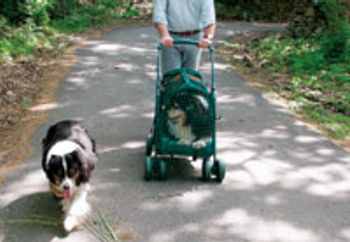
Diet, supplements, drugs and cognitive and physical stimulation all play roles.

Contributions, causes of age-related cognitive changes in dogs.
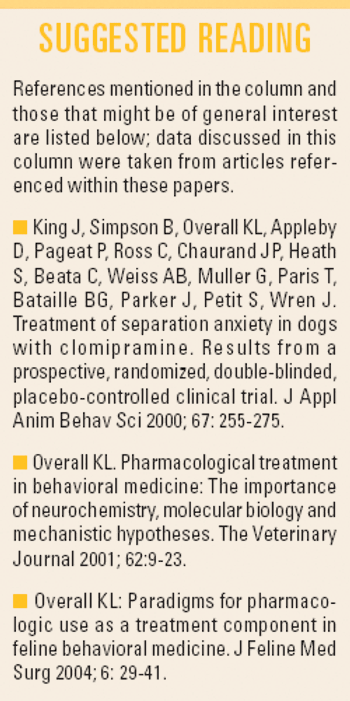
These steps teach the troubled pet that you are reliable and trustworthy...

This column is the first in a series addressing the most-common questions that veterinarians ask me about behavioral medicine.
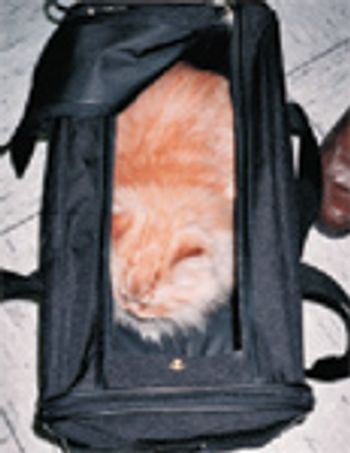
The final column in this series on feline communication focuses on integrating all the signals we have discussed and in reviewing their roles given the context of the specific behavioral environment.
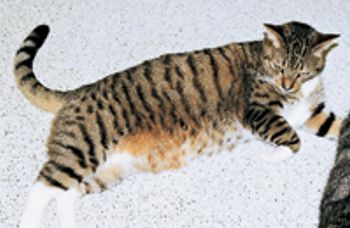
The third column in this continuing series on feline communication will focus on overall body posturing and the behavioral information it provides. Because no signaling system can be removed from the context of the entire animal, using what we have learned from observation of behavioral cues from felines' faces and tails can be extremely useful when we look at the cat in its relevant social context.

The second column in this series on feline communication will focus on the information provided by cat tails. While no signaling system can be removed from the context of the entire animal and correctly interpreted, it can be very useful to look at what information can be communicated by each body part involved in signaling. Then, we can take these observations and look for congruence or lack of it between other signaling systems (e.g., the eyes, voice, body, etc.) The only system closed to our understanding, for now, is the olfactory.
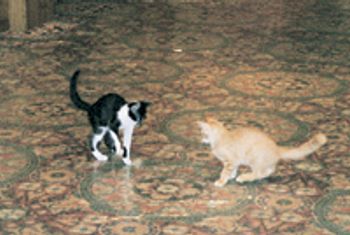
We must remember that interactions are a dance with roles for both partners, who each give and request information.

In the clinical research on human patient populations, the data suggest that the fastest way to induce and reinforce pathological panic is to remove any opportunity for self-control.

Body posture in dogs is an easy factor to assess in the signaling repertoire, but we too often ignore it. This quick tour through some common postures involving stance will help you understand what dogs are communicating and what their next movement might be.
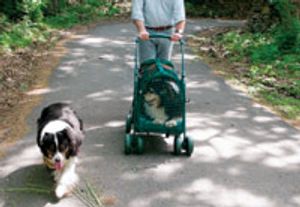
Published: August 1st 2010 | Updated:

Published: July 1st 2010 | Updated:

Published: January 1st 2011 | Updated:

Published: April 1st 2012 | Updated:

Published: March 1st 2012 | Updated:

Published: November 1st 2011 | Updated: